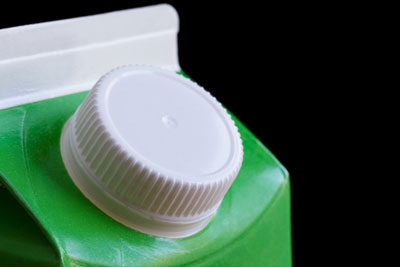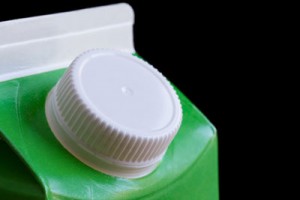3D-printed smart cap uses electronics to sense spoiled food
- Like
- Digg
- Del
- Tumblr
- VKontakte
- Buffer
- Love This
- Odnoklassniki
- Meneame
- Blogger
- Amazon
- Yahoo Mail
- Gmail
- AOL
- Newsvine
- HackerNews
- Evernote
- MySpace
- Mail.ru
- Viadeo
- Line
- Comments
- Yummly
- SMS
- Viber
- Telegram
- Subscribe
- Skype
- Facebook Messenger
- Kakao
- LiveJournal
- Yammer
- Edgar
- Fintel
- Mix
- Instapaper
- Copy Link
Posted: 21 July 2015 | Victoria White | No comments yet
Engineers have 3D-printed a wireless “smart cap” for a milk carton that detects signs of spoilage using embedded sensors…


Engineers at the University of California, Berkeley, in collaboration with colleagues at Taiwan’s National Chiao Tung University have used a 3D printer to create a wireless “smart cap” for a milk carton that detects signs of spoilage using embedded sensors.


The researchers set out to test if they could produce sensitive electronic components using a 3D printer. They started off by building a system using polymers and wax. The wax was used to leave hollow tubes into which the researchers injected and cured liquid metal. The shape and design of the metal determined the function of different electrical components. For instance, thin wires acted as resistors, and flat plates were made into capacitors. But the question remained: Do the pieces of metal actually do anything useful?
To answer that, the researchers decided to create a smart cap, integrating the electronic components into the plastic milk carton cap to monitor signs of spoilage. The smart cap was fitted with a capacitor and an inductor to form a resonant circuit. A quick flip of the carton allowed a bit of milk to get trapped in the cap’s capacitor gap, and the entire carton was then left unopened at room temperature (about 71.6 degrees Fahrenheit) for 36 hours.
Changes in the milk were detected wirelessly over a 36 hour period using the smart cap
The smart cap circuit could detect the changes in electrical signals that accompany increased levels of bacteria. The researchers periodically monitored the changes with a wireless radio-frequency probe at the start of the experiment and every 12 hours thereafter, up to 36 hours. The property of milk changes gradually as it degrades, leading to variations in its electrical characteristics. Those changes were detected wirelessly using the smart cap, which found that the peak vibration frequency of the room-temperature milk dropped by 4.3% after 36 hours. In comparison, a carton of milk kept in refrigeration at 39.2 degrees Fahrenheit saw a relatively minor 0.12% shift in frequency over the same time period.
“This 3D-printing technology could eventually make electronic circuits cheap enough to be added to packaging to provide food safety alerts for consumers,” said Liwei Lin, a professor of mechanical engineering and co-director of the Berkeley Sensor and Actuator Centre. “You could imagine a scenario where you can use your cellphone to check the freshness of food while it’s still on the store shelves.”
As 3D printers become cheaper and better, the options for electronics will expand, said Lin, though he does not think people will be printing out their own smartphones or computers anytime soon.
The study findings are published in Microsystems & Nanoengineering.









